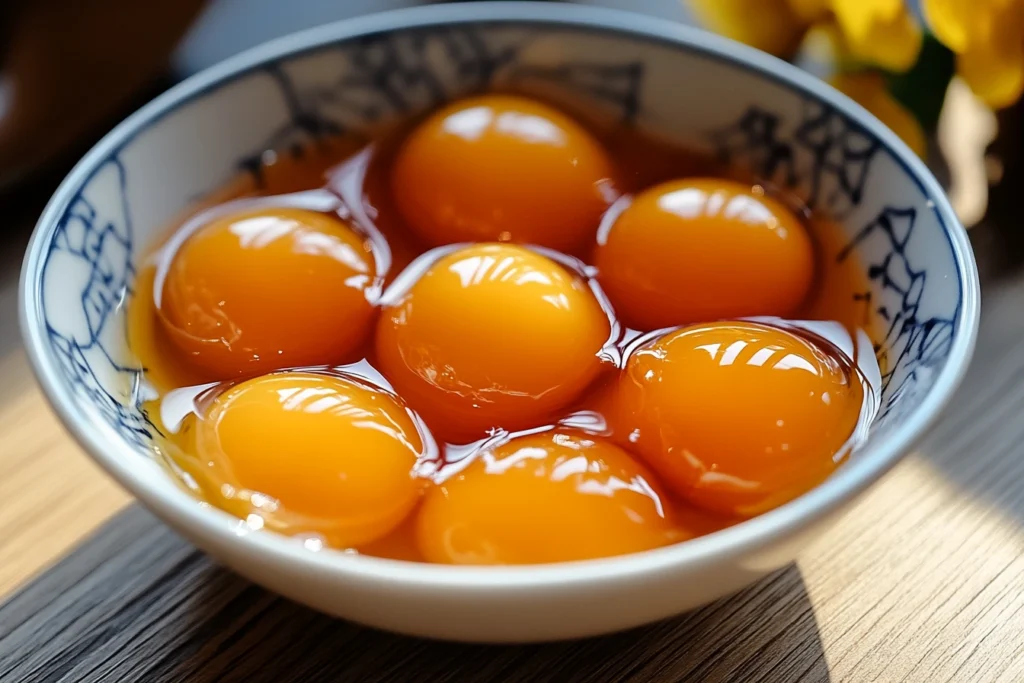Eggs are a staple ingredient in kitchens worldwide, but have you ever wondered why egg is liquid when processed? Liquid eggs have become a popular alternative to whole shell eggs due to their convenience, safety, and versatility. They are commonly used in restaurants, bakeries, and even home kitchens.
In this guide, we’ll explore everything you need to know about liquid eggs, including their nutritional value, benefits, storage tips, safety precautions, and best ways to cook with them. Whether you’re a professional chef or just someone who loves eggs, this article will help you understand why liquid eggs might be the right choice for you.

Table of Contents
PART 1: Understanding Why an Egg Is Liquid
What Makes an Egg Liquid?
Eggs naturally contain liquid components—egg whites and yolks—that solidify when cooked. However, when eggs are processed into liquid form, they undergo pasteurization, which keeps them safe to eat without cooking. This liquid consistency makes them easier to use in recipes and eliminates the need for cracking and separating eggs manually.
Different Forms of Liquid Eggs
Not all liquid eggs are the same. They come in different varieties, including:
- Whole Liquid Eggs – Made from both yolk and egg white, these are the closest alternative to fresh eggs.
- Liquid Egg Whites – A high-protein option, ideal for fitness enthusiasts and low-fat diets.
- Liquid Egg Yolks – Often used in baking and custards for their rich, creamy texture.
How Liquid Eggs Are Made & Processed
The process of making liquid eggs involves:
- Cracking & Separating – Eggs are cracked, and their contents are collected.
- Filtering – Any shells or impurities are removed.
- Pasteurization – The liquid eggs are heated to a safe temperature to kill bacteria like Salmonella while maintaining their natural texture.
- Packaging – Liquid eggs are stored in cartons or pouches, ready for commercial and home use.
PART 2: Nutritional Value of Liquid Eggs
Liquid eggs offer the same essential nutrients as whole eggs but with added convenience. Let’s break down their nutritional value and how they compare to shell eggs.
Calories and Macronutrient Content
Liquid eggs provide a balanced mix of protein, healthy fats, and essential nutrients. Here’s a comparison of their macronutrient content per 100 grams (about 3.5 oz):
| Nutrient | Whole Liquid Eggs | Liquid Egg Whites | Liquid Egg Yolks |
|---|---|---|---|
| Calories | ~148 kcal | ~52 kcal | ~322 kcal |
| Protein | ~12.5g | ~10.5g | ~15.9g |
| Fat | ~10g | ~0g | ~26.5g |
| Carbohydrates | ~1g | ~1g | ~3.6g |
Key Takeaways:
- Liquid egg whites are a great low-calorie, high-protein option.
- Liquid egg yolks contain more fat and calories, making them ideal for baking and sauces.
- Whole liquid eggs maintain a balanced nutrient profile, similar to fresh eggs.
Vitamins and Minerals in Liquid Eggs
Liquid eggs are packed with important vitamins and minerals, including:
- Vitamin B12 – Supports brain function and energy production.
- Riboflavin (B2) – Helps in cell growth and metabolism.
- Choline – Essential for brain health and liver function.
- Selenium – A powerful antioxidant that supports immune function.
Since pasteurization does not destroy nutrients, liquid eggs offer the same health benefits as fresh eggs.
How Liquid Eggs Compare to Whole Shell Eggs
Are liquid eggs healthier than whole eggs? The answer depends on your dietary needs.
| Comparison | Liquid Eggs | Whole Shell Eggs |
|---|---|---|
| Safety | Pasteurized (lower risk of bacteria) | Risk of Salmonella if raw |
| Convenience | Ready-to-use, no cracking needed | Requires cracking and separating |
| Storage Life | Longer shelf life | Shorter shelf life |
| Protein Content | Similar to fresh eggs | High protein |
| Cooking Uses | Perfect for baking, omelets, and scrambled eggs | More versatile for various dishes |
PART 3: Benefits of Using Liquid Eggs

Liquid eggs have become a popular choice in both home kitchens and commercial food production. But what makes them better than traditional shell eggs? Here are some key benefits.
Convenience in Cooking and Baking
One of the biggest advantages of liquid eggs is how easy they are to use. Unlike whole eggs, they come pre-cracked and pre-mixed, saving you time and effort.
✅ No More Shell Cracking – No need to worry about broken shells or messy spills.
✅ Pre-Mixed for Consistency – Liquid eggs provide an even texture for cooking and baking.
✅ Measured Portions – Many liquid egg products come with measurement guides, so you get exactly what you need.
For busy home cooks and professional chefs, liquid eggs make meal preparation faster and easier.
Longer Shelf Life Compared to Fresh Eggs
Fresh shell eggs typically last 3–5 weeks in the refrigerator, but liquid eggs can stay fresh for up to 10 weeks if unopened and properly stored.
| Egg Type | Refrigerated Shelf Life | Frozen Shelf Life |
|---|---|---|
| Whole Shell Eggs | 3–5 weeks | Not recommended |
| Liquid Whole Eggs | 10 weeks (unopened) | Up to 1 year |
| Liquid Egg Whites | 10 weeks (unopened) | Up to 1 year |
| Liquid Egg Yolks | 7–10 days | Up to 4 months |
Safer Alternative to Raw Eggs
Raw eggs carry a risk of Salmonella contamination, which can cause foodborne illnesses. However, liquid eggs go through a pasteurization process, which kills harmful bacteria while maintaining their natural taste and texture.
✅ Safe to use in recipes that call for raw eggs, like homemade mayonnaise or Caesar dressing.
✅ Ideal for commercial kitchens, where food safety is a priority.
✅ No risk of contamination from eggshells.
PART 4: How to Store Liquid Eggs Properly
Proper storage of liquid eggs is essential to maintain their freshness, safety, and quality. Whether you’re using them at home or in a professional kitchen, following the correct storage guidelines will help prevent spoilage and foodborne illnesses.
Refrigeration Guidelines for Liquid Eggs
Liquid eggs must be refrigerated at all times to prevent bacterial growth. Here are the recommended storage conditions:
| Liquid Egg Type | Unopened (Refrigerated at 40°F/4°C or below) | Opened (Refrigerated at 40°F/4°C or below) |
|---|---|---|
| Whole Liquid Eggs | Up to 10 weeks | 3–5 days |
| Liquid Egg Whites | Up to 10 weeks | 3–5 days |
| Liquid Egg Yolks | 7–10 days | 2–3 days |
✅ Always store liquid eggs in their original container to prevent contamination.
✅ Keep them away from strong-smelling foods, as eggs can absorb odors.
✅ Check the expiration date before using them.
Freezing Liquid Eggs: Do’s and Don’ts
If you need to extend the shelf life of liquid eggs, freezing is a great option. However, not all liquid egg products freeze well.
✔️ Can be frozen:
- Whole liquid eggs
- Liquid egg whites
- Liquid egg yolks (best when mixed with a pinch of salt or sugar)
❌ Should not be frozen:
- Liquid eggs with added ingredients (e.g., pre-seasoned eggs or egg substitutes)
How to Freeze Liquid Eggs Properly:
- Pour into airtight containers or ice cube trays for easy portioning.
- Label with the date to track freshness.
- Thaw in the refrigerator overnight before using.
Shelf Life of Different Types of Liquid Eggs
If stored correctly, liquid eggs can stay safe and usable for months. Here’s a breakdown of their shelf life under different conditions:
| Storage Method | Whole Liquid Eggs | Liquid Egg Whites | Liquid Egg Yolks |
|---|---|---|---|
| Refrigerated (Unopened) | Up to 10 weeks | Up to 10 weeks | 7–10 days |
| Refrigerated (Opened) | 3–5 days | 3–5 days | 2–3 days |
| Frozen | Up to 1 year | Up to 1 year | Up to 4 months |
PART 5: Safety Precautions When Handling Liquid Eggs
Since liquid eggs are pre-cracked and pasteurized, they are safer than raw shell eggs. However, improper handling can still lead to contamination or spoilage. Here are the most important safety precautions to follow when using liquid eggs.
Preventing Cross-Contamination
Cross-contamination occurs when bacteria from one food source spreads to another, which can cause foodborne illnesses. To prevent this:
✅ Wash your hands before and after handling liquid eggs.
✅ Use separate utensils and cutting boards for raw meat and eggs.
✅ Store liquid eggs in a sealed container away from raw foods.
✅ Clean spills immediately to prevent bacteria growth.
Checking for Spoilage: Signs of Bad Liquid Eggs
Even though liquid eggs have a longer shelf life than whole eggs, they can still go bad. Signs of spoiled liquid eggs include:
❌ Unpleasant smell – Fresh liquid eggs have a mild, neutral odor. If they smell sour or rotten, they should be discarded.
❌ Change in color – If liquid eggs appear grayish, greenish, or overly dark, they may have spoiled.
❌ Lumpy or watery texture – Fresh liquid eggs have a smooth consistency. If they separate into watery or chunky layers, they should not be used.
❌ Mold or unusual growth – Any visible mold inside the container is a sign that the eggs should be thrown away immediately.
How to Safely Cook and Consume Liquid Eggs
To kill any remaining bacteria, liquid eggs should be fully cooked before consumption. Here are safe cooking temperatures for different egg dishes:
| Dish | Minimum Internal Temperature |
|---|---|
| Scrambled Eggs | 160°F (71°C) |
| Omelets | 160°F (71°C) |
| Baked Goods | 160°F (71°C) |
| Egg-Based Sauces (Custards, Hollandaise) | 160°F (71°C) |
✅ Use a food thermometer to check the internal temperature of egg dishes.
✅ Avoid consuming raw or undercooked liquid eggs, unless they are labeled as safe for raw use.
✅ If using liquid eggs in no-bake recipes (e.g., mayonnaise, salad dressings), make sure they are pasteurized.
PART 6: Cooking and Baking with Liquid Eggs
Liquid eggs are a versatile ingredient used in many recipes, from breakfast dishes to baked goods. They offer the same taste, texture, and nutrition as whole eggs but with added convenience.

Substituting Liquid Eggs for Whole Eggs in Recipes
If a recipe calls for whole eggs, you can easily replace them with liquid eggs. Use the following conversion chart to get the right measurements:
| Whole Eggs | Liquid Whole Eggs | Liquid Egg Whites |
|---|---|---|
| 1 egg | ¼ cup (4 tbsp) | 2 tbsp (⅛ cup) |
| 2 eggs | ½ cup (8 tbsp) | ¼ cup (4 tbsp) |
| 3 eggs | ¾ cup (12 tbsp) | ⅜ cup (6 tbsp) |
| 4 eggs | 1 cup (16 tbsp) | ½ cup (8 tbsp) |
Best Dishes to Make Using Liquid Eggs
Liquid eggs can be used in all types of cooking, from simple breakfast meals to elaborate dishes.
🥚 Breakfast Recipes:
- Scrambled eggs
- Omelets
- Egg muffins
- French toast
🥚 Baking Recipes:
- Cakes and muffins
- Pancakes and waffles
- Cookies
- Custards and puddings
🥚 Savory Dishes:
- Quiches and frittatas
- Stir-fries
- Pasta carbonara
- Meatloaf (as a binder)
Tips for Achieving the Best Texture and Taste
✔️ Shake the container well before pouring to mix the egg whites and yolks evenly.
✔️ Cook on low to medium heat for fluffier scrambled eggs and omelets.
✔️ Add milk or cream for a richer texture.
✔️ Season after cooking to avoid excess moisture release.
Liquid eggs are easy to use and cook quickly, making them a great choice for both beginners and professional chefs. Looking for ways to enhance your scrambled eggs?
PART 7: Are Liquid Eggs Safe to Eat?
Many people wonder if liquid eggs are as safe as whole eggs. Since they go through a pasteurization process, liquid eggs are actually safer than raw shell eggs in most cases.
Pasteurization Process and Why It Matters
Pasteurization is a low-heat treatment that kills bacteria like Salmonella without cooking the eggs. This makes liquid eggs safe to consume and reduces the risk of foodborne illnesses.
✔️ Safe to use in no-bake recipes, such as salad dressings and smoothies.
✔️ Prevents foodborne illnesses caused by raw eggs.
✔️ Extends shelf life compared to fresh eggs.
Who Should Avoid Liquid Eggs?
While liquid eggs are generally safe, some people may need to avoid them:
❌ People with Egg Allergies – Liquid eggs still contain the same proteins as whole eggs, which can trigger allergic reactions.
❌ Vegans – Since liquid eggs are animal-based, they are not suitable for a plant-based diet.
❌ Those Avoiding Preservatives – Some commercial liquid egg products contain added stabilizers to maintain texture. Always check the ingredient list.
PART 8: The Environmental Impact of Liquid Eggs
With growing concerns about sustainability and food waste, many people wonder whether liquid eggs are an eco-friendly alternative to whole eggs. Let’s explore how liquid eggs impact the environment and whether they are a more sustainable choice.
How Liquid Eggs Reduce Food Waste
One of the biggest advantages of liquid eggs is their ability to minimize waste. Since liquid eggs are pre-cracked and packaged, they help reduce common egg-related waste, such as:
✅ Broken eggshells – Shell eggs often break during transportation and storage, leading to waste.
✅ Uneven egg portions – Many recipes require only whites or yolks, causing leftover parts to be thrown away. Liquid eggs eliminate this issue by offering separate egg products.
✅ Spoilage reduction – Liquid eggs have a longer shelf life, meaning fewer eggs go bad before being used.
According to food industry studies, liquid eggs reduce overall egg waste by up to 20%, making them a more efficient option.
Packaging and Eco-Friendly Options for Liquid Eggs
One drawback of liquid eggs is packaging waste from plastic or cartons. However, some manufacturers are switching to recyclable and biodegradable packaging to reduce their environmental footprint.
✅ Look for brands that use recycled or biodegradable containers.
✅ Buy in bulk to reduce packaging waste.
✅ Recycle containers properly to minimize landfill impact.
Liquid eggs are a convenient, safe, and versatile alternative to whole eggs. They offer the same nutritional benefits while reducing food waste and the risk of bacterial contamination.
Conclusion
Liquid eggs are a convenient, safe, and versatile alternative to whole eggs. They offer the same nutritional benefits while reducing food waste and the risk of bacterial contamination.
Key Takeaways:
✔️ Liquid eggs are pasteurized, making them safer than raw shell eggs.
✔️ They are easy to store, with a longer shelf life than fresh eggs.
✔️ They can be used in cooking, baking, and even raw applications.
✔️ Liquid eggs help reduce food waste and offer eco-friendly benefits.
Whether you’re a home cook or a professional chef, liquid eggs can save you time and effort in the kitchen while ensuring food safety. Try incorporating them into your favorite recipes today!
FAQ
1. How do you store liquid eggs?
Liquid eggs should be stored in the refrigerator at or below 40°F (4°C). Keep them in their original sealed container to maintain freshness. If unopened, they can last up to 10 weeks, but once opened, they should be used within 3–5 days.
If you have excess liquid eggs, freezing is an option:
Pour liquid eggs into an airtight container, leaving some space for expansion.
Label the container with the date.
Freeze for up to 1 year.
Thaw in the refrigerator before use—never at room temperature.
2. What are the safety precautions with eggs?
To handle liquid eggs safely:
✅ Always refrigerate them when not in use.
✅ Avoid cross-contamination by using clean utensils and surfaces.
✅ Cook liquid eggs to at least 160°F (71°C) to kill any bacteria.
✅ Do not consume expired liquid eggs—check for off-smells, discoloration, or separation.
3. Are liquid eggs safe to eat?
Yes! Liquid eggs are pasteurized, meaning they are safer than raw shell eggs. Pasteurization kills harmful bacteria like Salmonella, making liquid eggs safe for recipes that use raw eggs, such as:
Homemade mayonnaise
Caesar salad dressing
No-bake desserts
However, liquid eggs should still be fully cooked if used in scrambled eggs, omelets, or baking.
4. What is the safe storage and handling of eggs?
For maximum freshness and safety, follow these storage and handling tips:
Refrigerate immediately after purchase.
Do not leave liquid eggs at room temperature for more than 2 hours.
Keep them in the coldest part of the fridge, not the door.
Check expiration dates and discard eggs that smell bad or have a strange texture.


4 thoughts on “8 Essential Facts About Liquid Eggs: Everything You Need to Know”